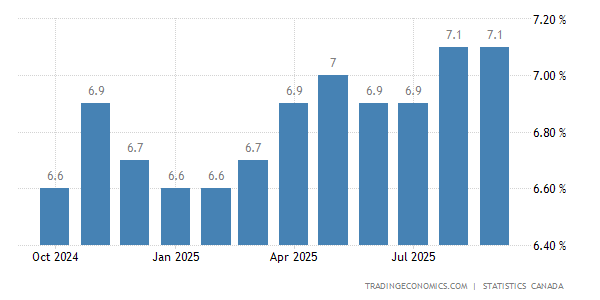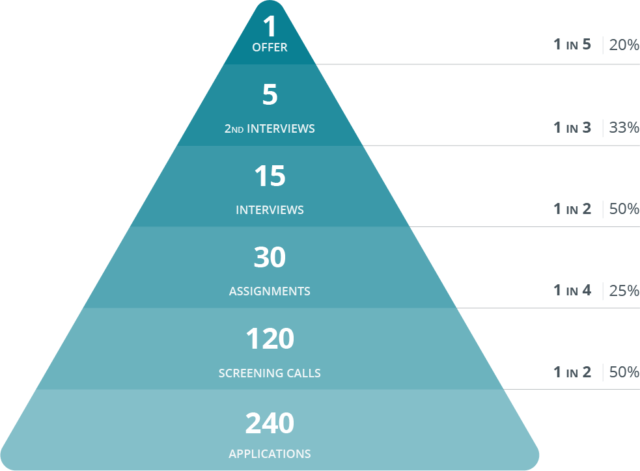The Recruitment Process
Learning Objectives
- Discuss the need and techniques for forecasting human resource needs.
- Be able to explain the steps to an effective recruitment strategy.
- Be able to develop a job analysis and job description.
- Explain the various strategies that can be used in recruitment.
The Recruitment Process
The recruitment process is an important part of human resource management (HRM). It is defined as a process that provides the organization with a pool of qualified job candidates from which to choose. As a process, recruitment involves an element of marketing and sales, as its objective is to raise the level of interest of customers (i.e., prospective employees) in what the company has to offer (i.e., jobs).
Human Resource (Capital) Plan
Although it might seem straightforward, obtaining the right talent, at the right place and at the right time, is not easy and requires extensive planning. A human resource plan comprises six main steps:
- Evaluate the goals of the organization. What is the organization’s plan for growth? Does it need personnel to staff a new office or retail location? Is it hoping to multiply the size of its sales force to support a significant sales push? Does it intend to offer additional customer service or internal support to boost customer satisfaction?
- Identify the factors that might affect the Human Resource (Capital) Plan. This is where the NOC and O*Net Online can be helpful. Large and small companies alike should examine information from local chambers of commerce, business publications and industry associations to predict possible developments in the market. That can include new businesses or other larger employers increasing their hiring or laying off employees.
- Establish the current talent landscape. Keeping the organization’s objectives in mind, there is a need for a complete picture of the current workforce. A detailed company organizational chart can illustrate the jobs, skills, and competencies of each member of the organization.
- Trend Analysis. Many factors need to be accounted for when looking ahead for future needs: turnover rate, investments in new technology, the economy, the unemployment rate, and the competition (poaching) can all influence the ability to achieve one’s staffing goals. Performing a trend analysis based on historical data is an effective way to forecast labour needs.
- Conduct a gap analysis. The difference between your future needs and the current landscape becomes the target to meet for your recruitment process.
- Develop a Recruitment Plan. Considerations for a recruitment plan are considered in the following sections.
Trend Analysis
Trend analysis examines past employment levels against selected business variables to predict future staffing requirements. To perform this analysis, an HR manager will select the factor(s) that influence labour levels the most and chart them for a four-to-five-year period. The headcount for the current time period is used with the historic data to arrive at a ratio to calculate future staffing needs. The usefulness of a trend analysis depends on the operational factor selected. For example, a moving company wants to determine how many employees it will need for the upcoming moving season. It uses sales, an operational factor and, according to historical records, it needs 3 movers for every $5,000 in sales. When the strategic plan calls for average weekly sales of $50,000 during the holiday shopping season, HR can predict a 30-employee staffing requirement. Another more complex example would be how hospitals prepared for the pandemic. The number of nurses needed for each COVID patient in intensive care would be an appropriate operational factor for hospital staff projections. A hospital may determine that it normally needs, on average, 0.2 nurses per intensive care patient per day. However, that ratio would rise significantly, to 0.8, from all of the protection measures required. Using projections of public health officials, a hospital predicted that when the pandemic was to hit, it would treat approximately 50 COVID patients. Thus, it determined that it would need 40 nurses as opposed to the normal 10.
Recruitment Plan
When devising a recruiting plan, an important element to consider is whether the pool of candidates will be sourced internally, externally or both. Each of these options have consequences for how recruiting will be conducted. Note that, for some organizations, there is really no choice but to go internal (e.g., military) or external (e.g., small business).
Internal Recruitment
Assuming the job analysis and job description are ready, an organization may decide to look at internal candidates’ qualifications first. Internal candidates are people who are already working for the company. If an internal candidate meets the qualifications, this person might be encouraged to apply for the job, and the job opening may not be published. Many organizations have formal job posting procedures and job bidding systems in place for internal candidates. For example, job postings may be sent to an internal email distribution list or posted on a website so all current employees have access to them.
External Recruitment
The alternative to internal recruitment is external recruitment. For example, for a high-level executive position, it may be decided to hire an outside head-hunting firm to help recruit the right person. For an entry-level position, advertising on social networking websites might be the best strategy. When recruiting externally, an understanding of the labour market is essential. For example, the pandemic had a drastic effect on unemployment rates in Canada, shifting from 5.5% to 13.7% in just a few months (see graph below). From a general recruiting perspective, this means that the available talent doubled in that period. Of course, the need for talent also shifted dramatically and, in general, most companies were not hiring as many employees (which causes the high unemployment numbers). However, recruiting strategy requires a finer-grained analysis of general unemployment numbers because there are vast variations in the availability of specific talent in the labour market. For example, the pandemic has led to an important shortage of workers in healthcare and agricultural industries but an abundance of workers in other areas (e.g., hospitality).

Source: tradingeconomics.com
Advantages and Disadvantages of Each Approach
Figure 4.1. Possible Advantages and Disadvantages of Hiring an Internal versus an External Candidate
| Type of Recruitment | Advantages | Disadvantages |
|---|---|---|
| Internal recruitment |
|
|
| Type of Recruitment | Advantages | Disadvantages |
|---|---|---|
| External recruitment |
|
|
Recruitment Pipeline
When drafting a recruitment plan, it is easy to underestimate the resources and time required for the process to unfold. On average, the time between the posting of an employment ad on a company’s website and actually having an employee sign an employment contract is around 40 days. If you change the end-point to the time at which the new employee actually meets minimal performance requirements, the timeline is more like six months. Given this delay, HRM managers need to be proactive and one step ahead of future vacancies. The objective is not simply hiring for open positions but hiring for positions that are likely to be open in the future. Tracking recruiting pipelines using analytical tools helps create a more efficient recruitment process. Here is an example of a workplace analytics firm that helps organizations in making these predictions.
Yield Ratio
Yield ratio is a performance indicator that pertains to the percentage of candidates from a specific source that made it from one stage to the next. For example, if 100 applicants sent resumes and 30 of them were convened for interviews, the yield of that step would be 30%. Essentially, the yield ratio shows the efficiency of the selected recruiting method. An HR manager could compare the yield of different recruitment sources to determine which one he or she should invest in for the future. For example, LinkedIn could have a yield of 25% of interviewees compared to Indeed with a yield of 20%. If the cost of posting is equal, posting on LinkedIn could be more beneficial.


